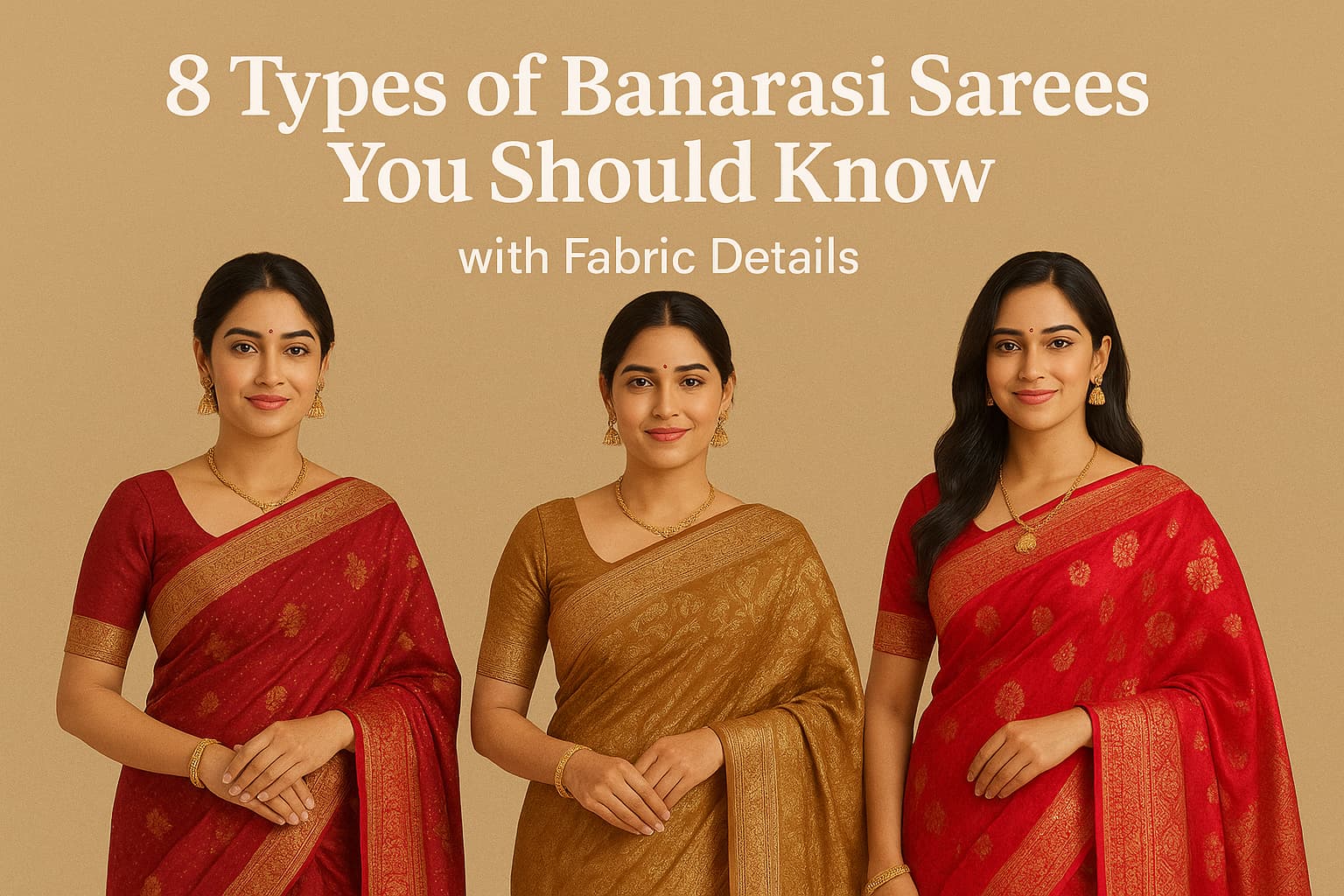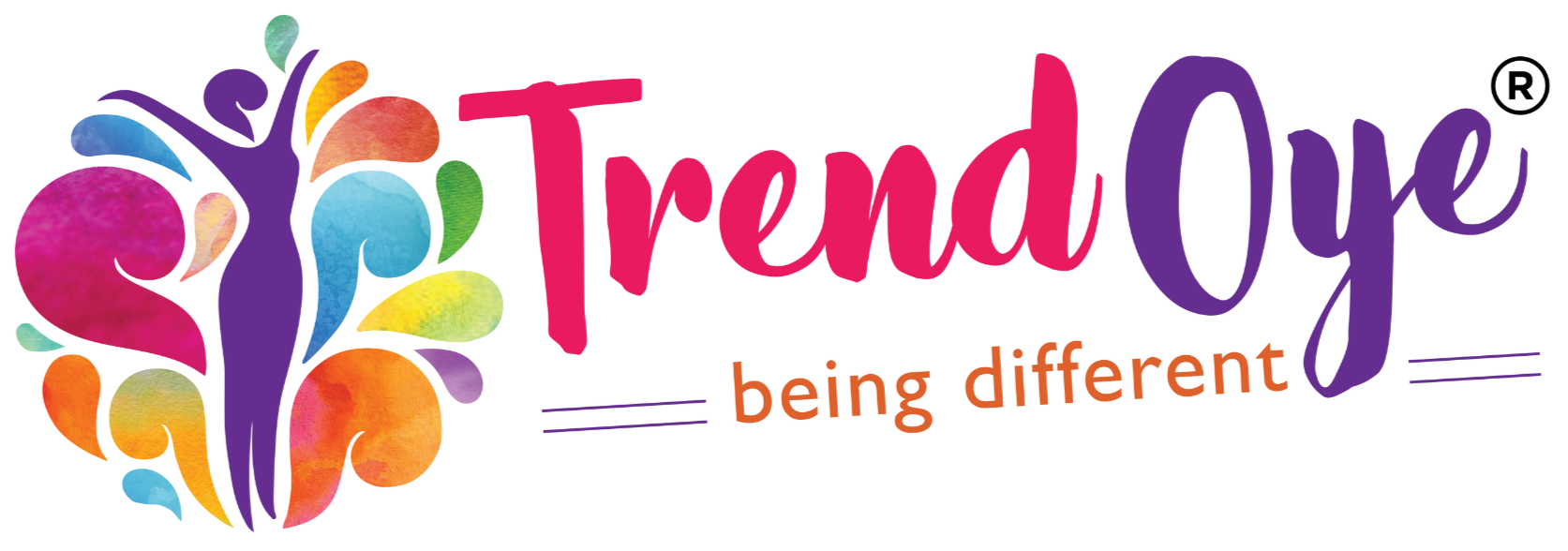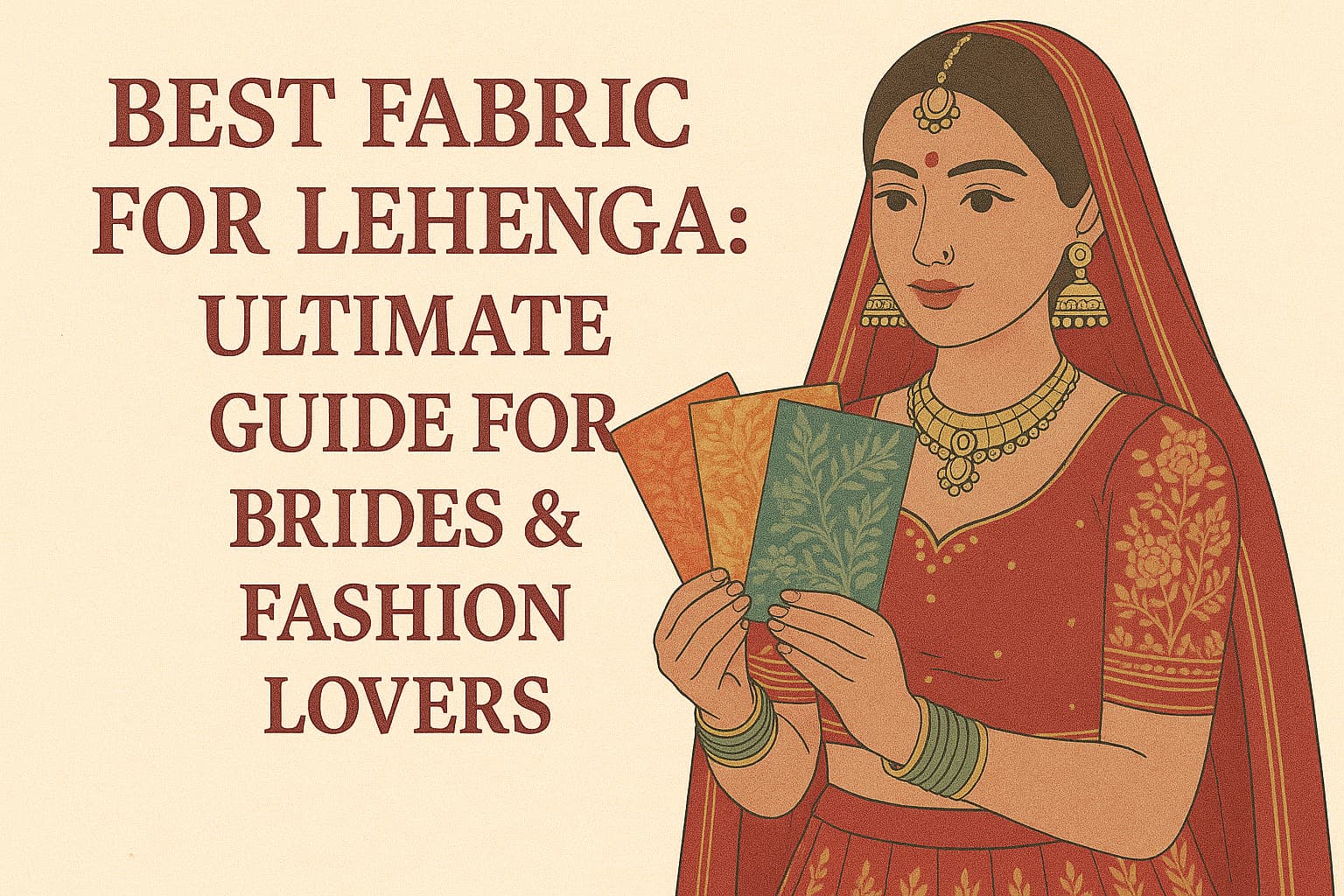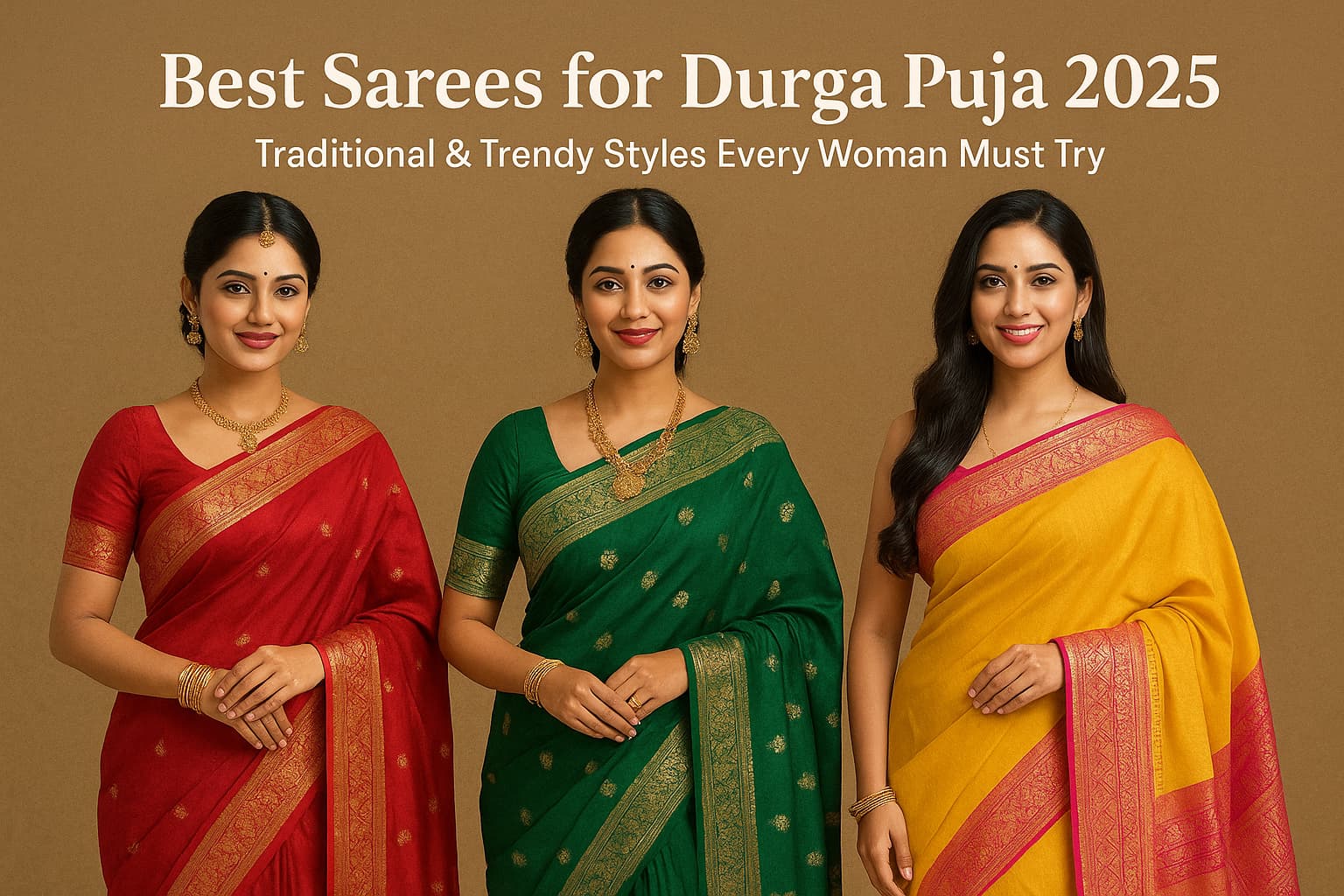
8 Types of Banarasi Sarees You Should Know (with Fabric Details)
Banarasi sarees are not only traditional wear but a token of richness, workmanship and eternal adornment. Hailing out of Varanasi (also described as Banaras), these sarees are known due to high quality of silk, elaborate weaving, and nice zari. No Banarasi saree can be repetitive in its story of cultural heritage in India, which is why they are so sought after even at weddings, festivals and grand occasions.
But did you know there are different types of Banarasi sarees, each with unique fabrics, weaving styles, and occasions they’re best suited for? To help you choose the ideal Banarasi saree, we will introduce 8 most trendy varieties in the given guide with styling tips and ideas.
What Makes Banarasi Sarees Unique?
Now that we know about the Banarasi types, it is important to know what makes a Banarasi saree so special:
-
Origin: Handwoven in Varanasi, Uttar Pradesh, with centuries of weaving tradition.
-
Materials: Luxurious silk, organza, georgette, and zari (gold/silver thread).
-
Craftsmanship: Complicated details which were based on the Mughal artistry- flower, vines, butis and ornamental borders.
-
Global Recognition: GI (Geographical Indication) recognized as the authenticity of the product.
The same heritage is lived even now with Banarasi saree varieties being more suited to contemporary women.
8 Types of Banarasi Sarees You Should Know
1. Katan Banarasi Saree (Pure Silk Classic)
-
History & Origin: Katan silk is one of the oldest Banarasi saree fabrics, known since the Mughal era. Woven entirely from pure silk threads, it was once reserved for royalty.
-
Weaving Technique: The fabric is woven with twisted pure silk threads, giving it a smooth and firm texture. Artisans often embellish it with brocade (zari) patterns, making it look grand.
-
Designs & Motifs: Floral jaal, bels (creepers), Mughal-inspired motifs like shikargah (hunting scenes), and paisleys.
-
Why Choose It: Rich, lustrous, and durable, making it a perfect heirloom saree.
-
Best Occasions: Weddings, bridal trousseau, and regal festive wear.
2. Organza (Kora) Banarasi Saree
-
History & Origin: Organza Banarasis were presented as a light version of heavy silks and they were worn by women who were fond of lightweight fabrics.
-
Weaving Technique: Made from fine silk threads with intricate zari work. The sheer base gives it a translucent, delicate appeal.
-
Designs & Motifs: Golden butis, small floral vines, and simple zari borders. The minimalism makes it look fresh and modern.
-
Why Choose It: Comfortable for day events while retaining elegance. Perfect for women who love understated luxury.
-
Best Occasions: Daytime pujas, housewarming ceremonies, or light festive gatherings.
3. Georgette Banarasi Saree
-
History & Origin: Evolved as a modernized fabric in the Banarasi family, georgette silk sarees gained popularity due to their lightweight flow.
-
Weaving Technique: Crafted from finely twisted silk yarns, georgette Banarasis are soft, flexible, and easy to drape.
-
Designs & Motifs: Floral patterns, butis, and ornate borders. Sometimes woven with meenakari (colored resham threads).
-
Why Choose It: Easy to carry, suitable for women of all ages. Can be styled in both traditional and modern drapes.
-
Best Occasions: Engagements, receptions, cocktail parties, and semi-formal occasions.
4. Shattir Banarasi Saree
-
History & Origin: Shattir sarees are relatively modern innovations, designed to keep Banarasi sarees affordable and versatile.
-
Weaving Technique: Woven using a blend of silk and other fabrics, they allow for creative experiments in weaving.
-
Designs & Motifs: Fusion patterns, geometric designs, and lighter zari borders. Less traditional, more contemporary.
-
Why Choose It: Budget-friendly without compromising on Banarasi charm. Great for younger women or those who want daily-wear Banarasi.
-
Best Occasions: Office festivities, casual family functions, or simple pujas.
5. Tissue Banarasi Saree
-
History & Origin: Known as the "golden fabric," tissue Banarasis have been treasured for centuries for their metallic sheen.
-
Weaving Technique: Woven with silk threads mixed with golden or silver zari, creating a gossamer effect that shimmers.
-
Designs & Motifs: Geometric checks, florals, or jaals. Sometimes embroidered with extra resham threads for detailing.
-
Why Choose It: Extremely glamorous and regal, yet delicate. A prized saree for grand occasions.
-
Best Occasions: Big weddings, celebrity-inspired looks, and evening receptions.
6. Jangla Banarasi Saree
-
History & Origin: "Jangla" refers to the jungle-like dense floral patterns that cover the saree. This type dates back to Mughal weaving traditions.
-
Weaving Technique: Heavy silk with elaborate brocade work all over, often using gold and silver zari.
-
Designs & Motifs: Bold floral motifs, creepers, and nature-inspired jaals. Considered one of the richest Banarasi sarees.
-
Why Choose It: A rare heirloom piece. A Jangla saree can take weeks or even months to weave.
-
Best Occasions: Bridal wear, royal ceremonies, or passing down as a family treasure.
7. Tanchoi Banarasi Saree
-
History & Origin: The art of Tanchoi weaving was brought from China and adapted into Banarasi weaving, giving it a unique Indo-Chinese touch.
-
Weaving Technique: Woven with silk-on-silk weaving, often without zari, which makes it lighter yet rich in design.
-
Designs & Motifs: Paisleys, crisscross patterns, and intricate floral motifs. Unlike heavy Banarasis, Tanchoi is softer and subtler.
-
Why Choose It: Perfect for women who want elegance without the weight of zari.
-
Best Occasions: Pre-wedding functions, light festive celebrations, or formal gatherings.
8. Butidar Banarasi Saree
-
History & Origin: A timeless Banarasi variety, the Butidar has been popular among both royalty and brides for centuries.
-
Weaving Technique: Crafted using gold, silver, and silk threads (often called Ganga-Jamuna weaving, since gold and silver contrast together).
-
Designs & Motifs: Small motifs (butis) spread evenly across the fabric. Motifs include floral sprays, mango, or star-like patterns.
-
Why Choose It: Symbol of tradition and grace. Considered one of the most "classic" Banarasi sarees.
-
Best Occasions: Weddings, festive rituals, and traditional ceremonies.
How to find the right Banarasi saree that would suit you?
Not all Banarasi saree are applicable in all situations. Here is quick guide:
| Type | Occasion | Weight | Look |
|---|---|---|---|
| Katan | Weddings, bridal wear | Heavy | Regal |
| Organza | Day festivals, pujas | Light | Graceful |
| Georgette | Parties, receptions | Medium | Trendy |
| Shattir | Casual festive wear | Light | Stylish |
| Tissue | Receptions, luxury events | Medium | Glamorous |
| Jangla | Bridal & heirloom sarees | Heavy | Royal |
| Tanchoi | Daytime weddings/events | Light | Elegant |
| Butidar | Pujas & rituals | Medium | Traditional |
Styling Tips for Banarasi Sarees
-
Blouses: Experiment with sleeveless, boat-neck, or jacket-style blouses for a fusion twist.
-
Jewelry: Heavy temple jewelry for traditional looks; minimalist diamonds for modern styling.
-
Drapes: Try belted drapes or lehenga-style draping for a contemporary edge.
-
Accessories: A potli bag or clutch adds elegance to your ensemble.
Where to Buy Authentic Banarasi Sarees?
Finding genuine Banarasi sarees online can be tricky. At TrendOye, we bring you authentic Banarasi sarees, crafted with premium fabrics and traditional weaving techniques. From regal Katan and Jangla sarees to lightweight Organza and Georgette varieties, our collection has something for every occasion.
👉 Explore TrendOye’s Banarasi Saree Collection and add timeless elegance to your wardrobe.
Conclusion
Banarasi sarees are not just garments—they are a legacy passed through generations. From the royal Katan and Jangla to the delicate Organza and Tanchoi, each type has its own beauty. Choosing the right one depends on the occasion, fabric preference, and your personal style.
So this festive season or wedding celebration, make a statement with an authentic Banarasi saree from TrendOye and embrace the richness of Indian tradition.



Leave a comment
यह साइट hCaptcha से सुरक्षित है और hCaptcha से जुड़ी गोपनीयता नीति और सेवा की शर्तें लागू होती हैं.